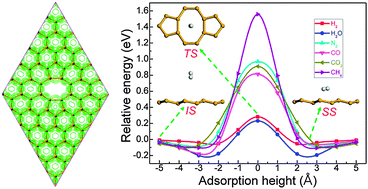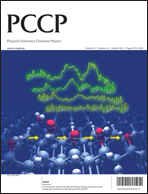Porous silicene as a hydrogen purification membrane
Abstract
We investigated theoretically the hydrogen permeability and selectivity of a porous silicene membrane via first-principles calculations. The subnanometer pores of the silicene membrane are designed as divacancy defects with octagonal and pentagonal rings (585-divacancy). The porous silicene exhibits high selectivity comparable with graphene-based membranes for hydrogen over various gas molecules (N2, CO, CO2, CH4, and H2O). The divacancy defects in silicene are chemically inert to the considered gas molecules. Our results suggest that the porous silicene membrane is expected to find great potential in gas separation and filtering applications.


 Please wait while we load your content...
Please wait while we load your content...